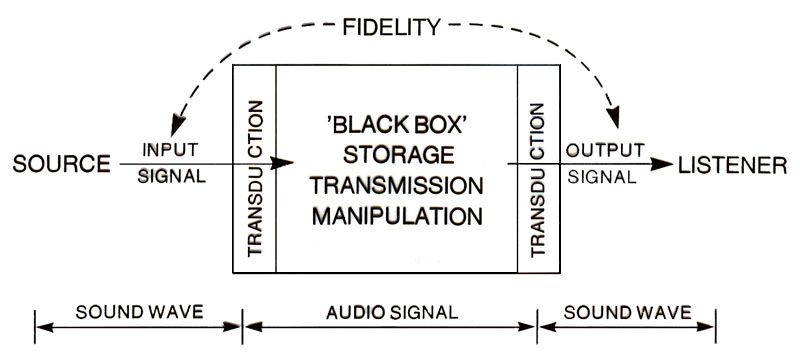Objective Model:
"Who says what in which channel to whom with what effect" (Lasswell, 1948) Electroacoustic extensions:
"Black box" model (Truax)

FIDELITY vs SCHIZOPHONIA
conjunction vs disjunction
extension or transformation?
reproduction or a new reality (the virtual?)
realism vs enhancement
noise reduction, effacing the "work" of the technology (Doane)
Subjective Model:

Mediation Model
Micro:

Information Model
(1) Information based (rather than energy or signal based)(2) Listening as the key process
- recognition of auditory patterns and assigning meaning
-"soundscape" as how a sonic environment is understood
- dynamic system of information exchange
- electroacoustics extends listening: analytical & distracted(3) Context based
- aural meaning depends on a knowledge of context
- shared knowledge is the basis of the acoustic/electroacoustic community
- sound not only reflects context but is integrated with it
- fidelity vs schizophonia(4) Mediating relationship of sound
- sound creates a relationship between the listener and the environment
- the relationship can be interactive or alienating
- electroacoustics can establish a "surrogate" relationship: an imposed context
- in advertising, sound can create a relation between a product and its image(5) Leads to design models
- acoustic design: how sound functions in a soundscape ---> acoustic ecology
- design can involve modifying functional relationships as well as the sounds
- changing listening habits is essential to design and ecologyMethodology / Role of Noise / Design Criteria and Strategies for these Models
